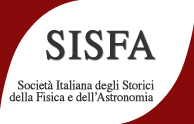Speaker
Description
At the end of 1863, Heinrich Wild, physics professor at the University of Bern, conceived the polaristrobometer, a groundbreaking optical instrument designed to measure the rotation of polarized light caused by crystalline substances and organic compounds. The polaristrobometer was developed in two versions: a compact handheld model and a larger tripod-mounted device. This presentation focuses on the first handheld specimens, constructed by the renowned Parisian instrument maker Jean Georges Hofmann. The device was sold in several copies during that period, although, as far as we know, only a very limited number of specimens seem to have survived in museums and private collections. Equipped with Nicol prisms, Savart plates, and a precise rotating drum mechanism, the device achieved measurement accuracy ten times greater than previous instruments. Its portability and ease of use allowed measurements under natural lighting without requiring dark rooms, overcoming limitations of earlier polarimeters. The polaristrobometer had diverse applications, ranging from industrial sugar analysis in refining and food production to medical diagnostics, especially diabetes monitoring. Wild’s invention thus marked a significant advancement in nineteenth-century analytical instrumentation, combining optical physics with practical chemical analysis. This presentation seeks to explore the scientific ingenuity behind the handheld polaristrobometer made by Hofmann, describing its design and features, and discussing its important and successful role in sugar measurement and diagnostic technologies of its time, despite being largely forgotten today.

